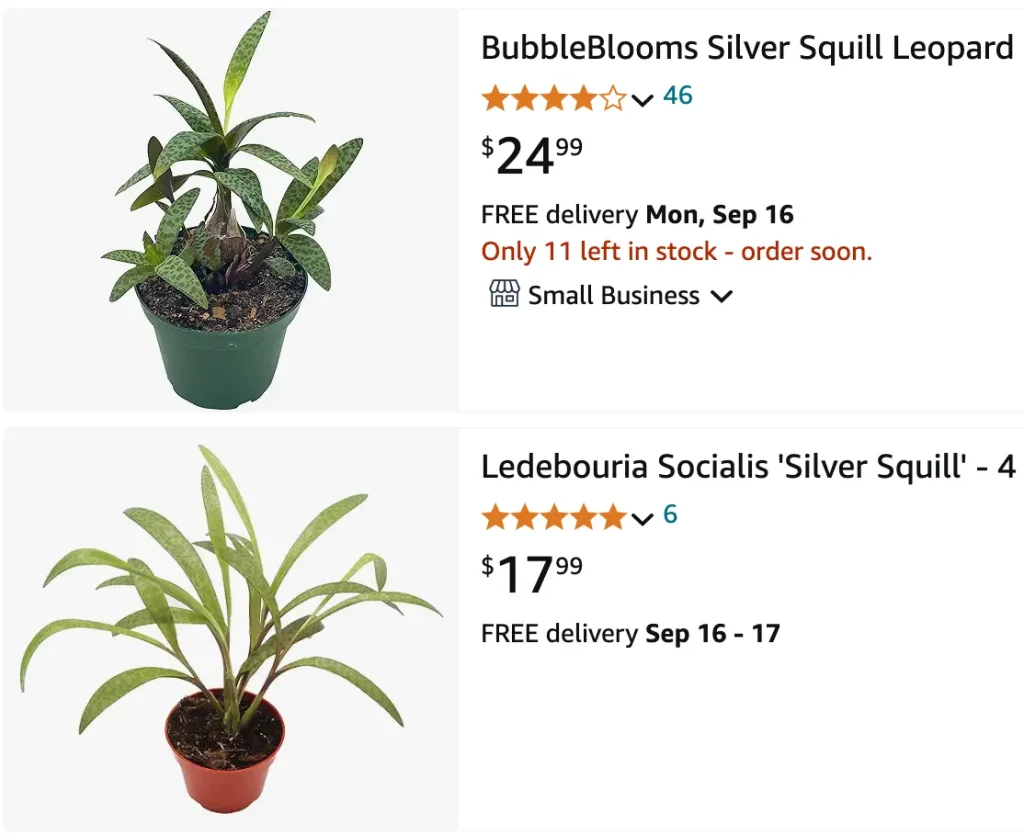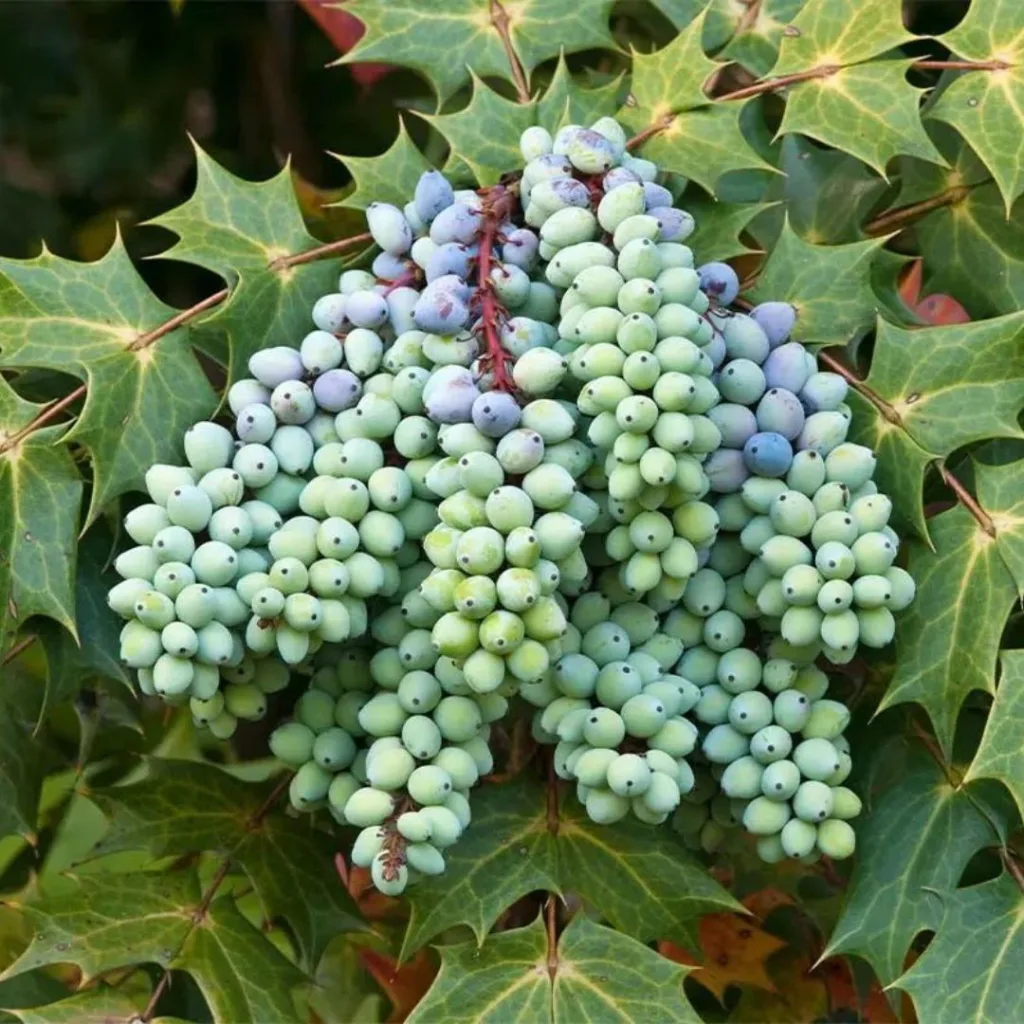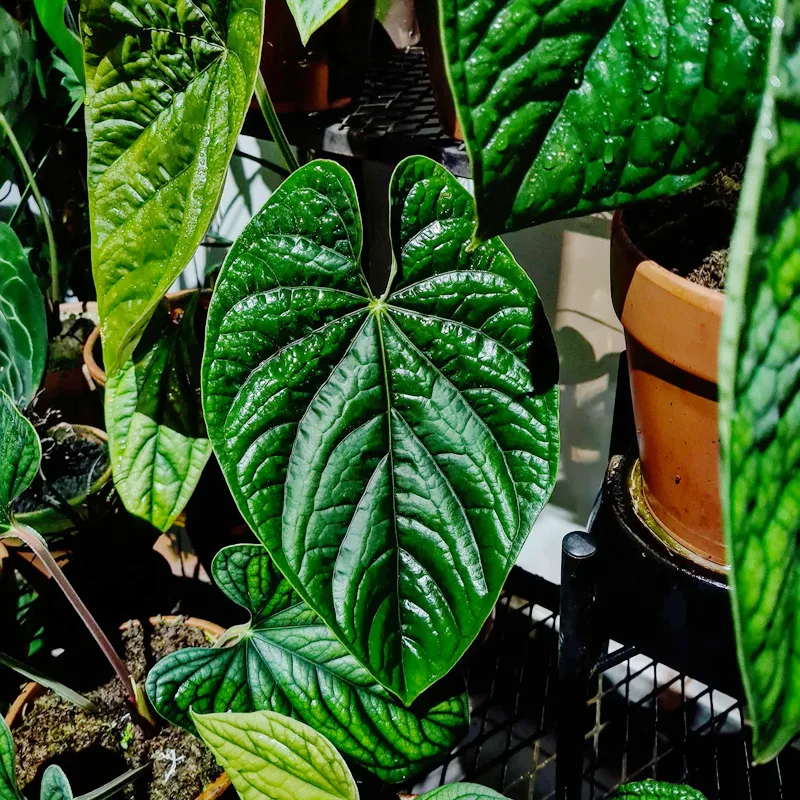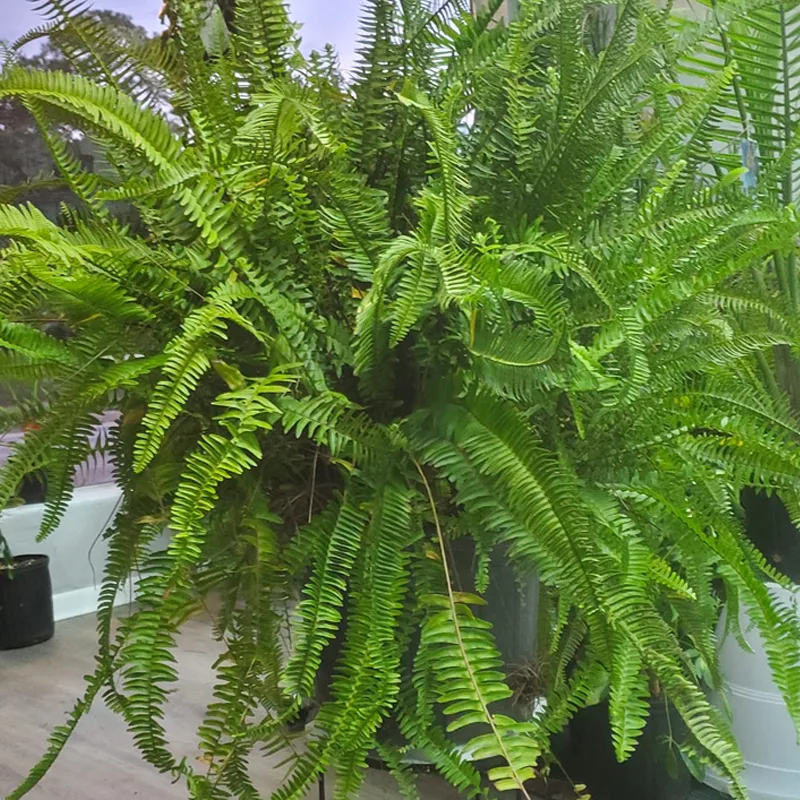
What is Ledebouria Socialis?
Ledebouria Socialis, commonly known as the Silver Squill, is a fascinating and resilient succulent plant. Originating from South Africa, it’s known for its unique foliage that resembles a cluster of silver-speckled pearls. The plant thrives in arid conditions, making it a perfect choice for those who want a low-maintenance yet striking addition to their plant collection.
64 Species in Genus Ledebouria
How to Grow Ledebouria Socialis?
Growing Ledebouria Socialis is relatively straightforward. Here are a few tips to ensure your plant thrives:
- Light: This plant prefers bright, indirect light. A spot near a window with filtered sunlight works well. Avoid direct sunlight, which can scorch the leaves.
- Soil: Use a well-draining potting mix. A cactus or succulent blend mixed with perlite or sand will provide the right drainage.
- Water: Ledebouria Socialis is drought-tolerant, so it’s important not to overwater. Allow the soil to dry out completely between waterings. During winter, reduce watering as the plant enters a dormant phase.
- Temperature: It thrives in temperatures ranging from 60-80°F (15-27°C). It’s best to keep it away from drafts or sudden temperature changes.
- Fertilization: Feed the plant with a balanced, diluted fertilizer once a month during the growing season (spring and summer).
How to Care for Ledebouria Socialis?
Caring for Ledebouria Socialis involves a few basic practices:
- Humidity: This plant prefers lower humidity levels, similar to its native environment.
- Pruning: Remove any dead or yellowing leaves to keep the plant healthy and encourage new growth.
- Repotting: Repot the plant every 2-3 years or when it outgrows its pot, preferably in the spring.
How to Divide Ledebouria Socialis?
Dividing Ledebouria Socialis is a great way to manage its growth and propagate new plants. Here’s how to do it:
- Remove the Plant: Gently take the plant out of its pot and inspect the root system.
- Separate: Divide the plant into sections, making sure each section has a healthy root system. Use a clean, sharp knife or shears if necessary.
- Replant: Pot each section in a well-draining mix and water lightly. Allow them to establish in their new pots.
Ledebouria Socialis vs Revoluta
Comparing Ledebouria Socialis with Ledebouria Revoluta reveals some distinct differences:
- Appearance: Ledebouria Socialis has silver-speckled leaves with a more rounded, clustered form. In contrast, Ledebouria Revoluta features more elongated, slender leaves with a reddish-brown edge.
- Growth Habit: Ledebouria Socialis tends to form a dense rosette of leaves, while Ledebouria Revoluta spreads out more in a more open arrangement.
- Care Requirements: Both species have similar care needs but may differ slightly in their tolerance to light and watering conditions. It’s always best to research the specific needs of each variety for optimal growth.
What to Plant With Ledebouria Socialis?
Ledebouria Socialis pairs well with other succulents and drought-tolerant plants. Consider combining it with:
- Aloe Vera: For a complementary texture and similar care requirements.
- Echeveria: Adds contrasting shapes and colors.
- Haworthia: Provides a visually interesting contrast with its rosette form.
Can You Grow Ledebouria Socialis Indoors?
Yes, Ledebouria Socialis is well-suited for indoor environments. Its low light requirements and compact size make it a great choice for indoor gardening. Just ensure it receives enough indirect light and has good airflow to prevent fungal issues.
Is Ledebouria Socialis Toxic?
No, Ledebouria Socialis is not known to be toxic to pets or humans. It’s a safe choice for homes with animals or children.
Benefits of Growing Ledebouria Socialis
- Low Maintenance: Requires minimal care and water, making it ideal for busy individuals.
- Decorative: Adds a unique aesthetic with its striking foliage.
- Air Purification: Like many plants, it contributes to cleaner indoor air.
Common Problems and Solutions
- Overwatering: Causes root rot. Ensure the soil is well-draining and allow it to dry out completely between waterings.
- Leggy Growth: Indicates insufficient light. Move the plant to a brighter location.
By following these guidelines, you can ensure your Ledebouria Socialis remains a healthy and attractive addition to your plant collection. Whether you’re a seasoned plant enthusiast or a newcomer, this plant’s unique charm and ease of care make it a rewarding choice.
If i die, water my plants!



